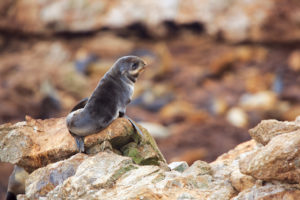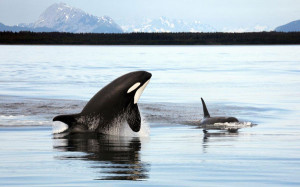Two hundred years ago, the captain of a 280-ton whaling vessel reported seeing a bounty of fur seals on the Farallon Islands, 28 miles west of San Francisco. Subsequently, the captain and a small group of Boston-based whalers returned to slaughter an estimated 150,000 fur seals between 1810 and 1813. The seals were highly coveted for their warm, dense fur, which has 300,000 hairs per square inch. Russian hunters then occupied the island for 25 years and wiped out the remaining fur seals.
Today, fur seals, which come ashore only to breed, are returning to the islands, now protected as a national wildlife refuge. A few male fur seals began showing up about 30 years ago, but the first pup wasn’t born there until 1996. Since then, the adults have been busy. In 2005, 90 animals were counted, including 24 pups. Last year, scientists counted 190 seals, including 97 pups. Most of the adult seals are females, with just a few breeding males. Males can grow to 600 pounds, while females top out at only about 110 pounds.
Fur seals have been rearing their pups on a little-used part of West End Island, but they are starting to spill into California sea lion haul-out zones, says Russell Bradley, Farallon program manager for PRBO Conservation Science. “If the population continues to grow, it will change the dynamics of the island. If they expand to populate their historic territory [the island’s only flat spot, now shared with researchers’ houses] we might have to eventually use scaffolding to get around like scientists do on [Alaska’s] Pribilof Islands,” says Bradley.
The Pribilof Islands in the Bering Sea are one of the main breeding colonies for the seals. But the seals on the Farallones are from San Miguel Island, the westernmost of the Channel Islands in Southern California, where, Bradley says, the population is large enough to cause “prospectors” to seek suitable breeding habitat elsewhere. Check out PRBO’s Farallones blog at www.losfarallones.blogspot.com.




